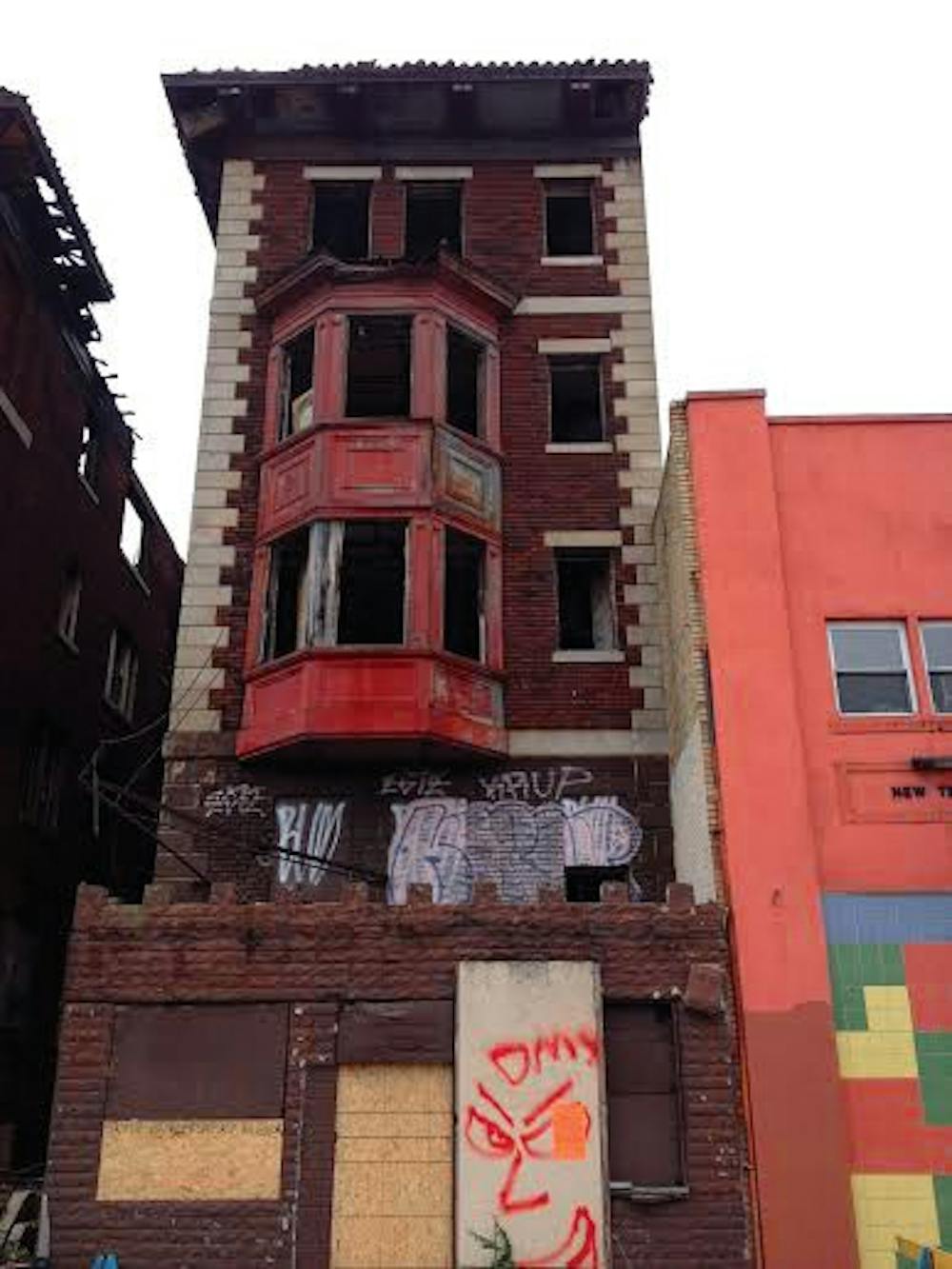In 2012, 4726-28 Chestnut, a graffiti-covered facade with gaping glassless windows, sat vacant and collecting fines. A fire started by a squatter would gut the building a year later.
The building typified urban blight, an all too familiar fate for many properties in West Philadelphia. But a University City District Program, Project Rehab, is working to transform neglected properties into valuable community assets.
Established in 2011 , Project Rehab partners with the Department of Licenses and Inspections and community organizations to unlock the economic potential of neglected properties in the neighborhood. In its first two years, the program has obtained over $4 million in redevelopment investment and created over $13 million of market value. The Chestnut Street property yielded over $70,000 for both the property owner, Pansy Clarke , and the city of Philadelphia.
In the 1990s , Clarke purchased the two 18,000 square-foot buildings on the 4700 block of Chestnut Street in hopes of turning them into senior care facilities. But when the redevelopment proved to be too expensive, she used the property as collateral to obtain a blanket mortgage for a more affordable venture in Chester County.
UCD had a tumultuous experience working with Clarke since her properties confronted a series of obstacles through the process. Since the blanket mortgage prevented Clarke’s from selling, the buildings would have been deemed dangerous by the city and subsequently demolished. When UCD finally managed to obtain offers for a short sale, a fire started by a squatter destroyed much of the property.
Despite the rescinded offers after the fire, UCD helped guide Clarke through the process of appealing the demolition and selling the property. UCD also worked with the city to ensure the new owner’s ability to reconstruct the properties — a settlement that also saved the city thousands of dollars of demolition costs. Upon completion, the redeveloped properties will house 20 apartments and a commercial space valued at over $2 million, Project Rehab Executive Director Ryan Spak said .
“UCD was instrumental in helping me through the process when I had no one else to turn to during that time,” Clarke said. “This project, and especially Spak’s hard work, is a much needed service in the community.”
Abandoned properties have a clearly negative impact on the financial wellbeing of a community. Even beyond the unpaid taxes and fines on the property, the neighborhood loses the individual value that each resident has the potential to contribute.
“A vacant property leaves a gigantic hole since nobody is living in it to enhance the area, even by simply shopping at local markets and retail shops,” Spak said . “Now multiply this lost economic value by the total number of vacant properties in our community, and it becomes a serious problem.”
In a neighborhood with vacant buildings, the dollar value of all properties severely declines due to the unattractive presence of deteriorating real estate.
“Vacant properties drag down adjacent property values since people are discouraged from buying there, and it also makes it more difficult for people to sell their homes,” PennDesign professor Thomas Daniels said.
In addition to diminishing financial prospects, these decaying properties pose issues of safety and health “since the empty space creates an opportunity for someone to do something wrong, and ... also leads to vermin, rotting wood and other unhealthy things,” Spak said.
UCD was also moved to create Project Rehab based on the emotional damage that these properties had on the community.
“One problem is that property can tear down a block and infest the surrounding community,” said Barry Grossbach, the chair of the Spruce Hill Community Association zoning committee. “People become discouraged living in the middle of physical blight, and some decide not to stay and that leads to continued urban flight.”
In two years, 15 properties have been sold, eight have been rehabilitated and over 20 are currently under construction.
“If you make the block whole, you can restore a community,” Grossbach said.
The process of rehabbing these properties is not an easy one. UCD faces several obstacles in the process of helping owners redevelop such neglected properties. Even the first step of identifying the owner of a vacated property presents more problems than one would expect.
After initially identifying Clarke’s property as vacant, UCD had to send Clarke over 15 letters before receiving a response. To track down an owner in a different case, UCD staff had to take a road trip to a cemetery to uncover the legal name of a deceased owner who had left her home to a relative, Spak said.
“UCD provides the manpower ... to work through the chaotic channels to track down these owners, work with [the Department of Licenses and Inspections] to put pressure on them and arrange to have the properties restored or stabilized ... to remove structural blight,” Grossbach said.



